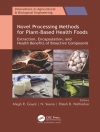The fields of Bioinformatics and Computational Biology have been growing steadily over the last few years boosted by an increasing need for computational techniques that can efficiently handle the huge amounts of data produced by the new experimental techniques in Biology. This calls for new algorithms and – proaches from fields such as Data Integration, Statistics, Data Mining, Machine Learning, Optimization, Computer Science and Artificial Intelligence. Also, new global approaches, such as Systems Biology, have been emerging replacing the reductionist view that dominated biological research in the last d- ades. Indeed, Biology is more and more a science of information needing tools from the information technology field. The interaction of researchers from diff- ent scientific fields is, more than ever, of foremost importance and we hope this event will contribute to this effort. IWPACBB’10 technical program included a total of 30 papers (26 long papers and 4 short papers) spanning many different sub-fields in Bioinformatics and Computational Biology. Therefore, the technical program of the conference will certainly be diverse, challenging and will promote the interaction among computer scientists, mathematicians, biologists and other researchers. We would like to thank all the contributing authors, as well as the members of the Program Committee and the Organizing Committee for their hard and highly valuable work. Their work has helped to contribute to the success of the IWAPCBB’10 event. IWPACBB’10 wouldn’t exist without your contribution.
Daftar Isi
Microarrays.- Highlighting Differential Gene Expression between Two Condition Microarrays through Heterogeneous Genomic Data: Application to Lesihmania infantum Stages Comparison.- An Experimental Evaluation of a Novel Stochastic Method for Iterative Class Discovery on Real Microarray Datasets.- Automatic Workflow during the Reuse Phase of a CBP System Applied to Microarray Analysis.- A Comparative Study of Microarray Data Classification Methods Based on Ensemble Biological Relevant Gene Sets.- Data Mining and Data Integration.- Predicting the Start of Protein ?-Helices Using Machine Learning Algorithms.- A Data Mining Approach for the Detection of High-Risk Breast Cancer Groups.- GRASP for Instance Selection in Medical Data Sets.- Expanding Gene-Based Pub Med Queries.- Improving Cross Mapping in Biomedical Databases.- An Efficient Multi-class Support Vector Machine Classifier for Protein Fold Recognition.- Feature Selection Using Multi-Objective Evolutionary Algorithms: Application to Cardiac SPECT Diagnosis.- Phylogenetics and Sequence Analysis.- Two Results on Distances for Phylogenetic Networks.- Cramér Coefficient in Genome Evolution.- An Application for Studying Tandem Repeats in Orthologous Genes.- Accurate Selection of Models of Protein Evolution.- Scalable Phylogenetics through Input Preprocessing.- The Median of the Distance between Two Leaves in a Phylogenetic Tree.- In Silico AFLP: An Application to Assess What Is Needed to Resolve a Phylogeny.- Employing Compact Intra-genomic Language Models to Predict Genomic Sequences and Characterize Their Entropy.- Biomedical Applications.- Structure Based Design of Potential Inhibitors of Steroid Sulfatase.- Agent-Based Model of the Endocrine Pancreas and Interaction with Innate Immune System.- State-of-the-Art Genetic Programming for Predicting Human Oral Bioavailability of Drugs.- Pharmacophore-Based Screening as a Clue for the Discovery of New P-Glycoprotein Inhibitors.- Bioinformatics Applications.- e-Bi Motif: Combining Sequence Alignment and Biclustering to Unravel Structured Motifs.- Applying a Metabolic Footprinting Approach to Characterize the Impact of the Recombinant Protein Production in Escherichia coli.- Rbbt: A Framework for Fast Bioinformatics Development with Ruby.- Analysis of the Effect of Reversibility Constraints on the Predictions of Genome-Scale Metabolic Models.- Enhancing Elementary Flux Modes Analysis Using Filtering Techniques in an Integrated Environment.- Genome Visualization in Space.- A Hybrid Scheme to Solve the Protein Structure Prediction Problem.












